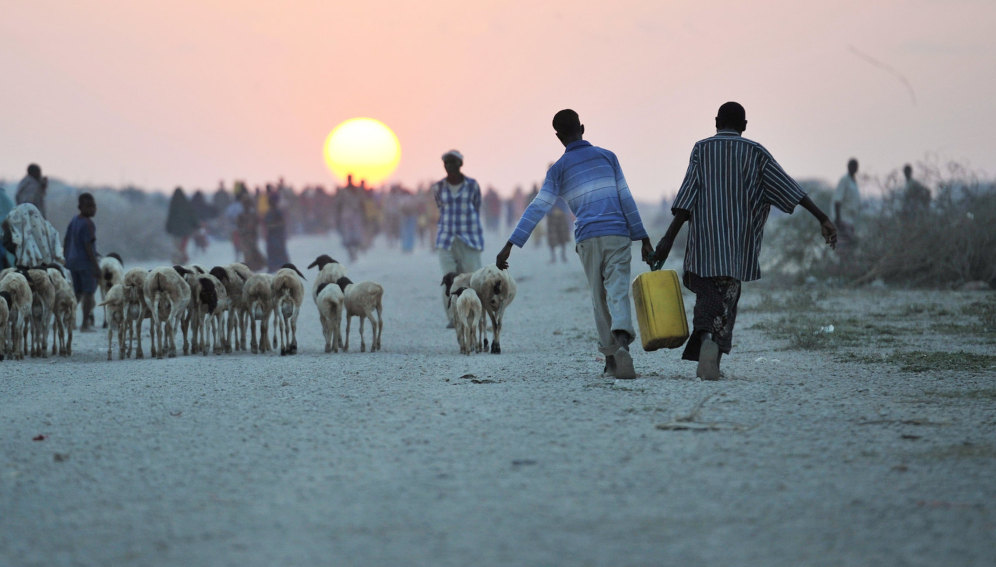01/12/23
Nearly one in four people now drought stricken – UN

By: Dann Okoth
Send to a friend
The details you provide on this page will not be used to send unsolicited email, and will not be sold to a 3rd party. See privacy policy.
[NAIROBI] Almost one in every four people on earth are now stricken by drought, and it’s just the start of things to come, according to the latest UN report released as the COP28 climate summit gets underway in Dubai.
The Global Drought Snapshot by the United Nations Convention to Combat Desertification (UNCCD), published on Friday (1 December) warns of an “unprecedented emergency on a planetary scale” and says the human and economic costs of drought are likely higher than that of any other hazard.
“Unlike other disasters that attract media attention, droughts happen silently, often going unnoticed and failing to provoke an immediate public and political response,” said UNCCD executive secretary Ibrahim Thiaw in a statement.
This perpetuates a cycle of neglect, Thiaw added, leaving affected populations to bear the burden in isolation.
“Drought continues to tighten its frightening grip on both land and life.It is a human tragedy that’s only growing.”
Daniel Tsegai, programme officer, UNCCD
The report, released on the second day of COP28, calls for “transformational change” and points to wide-ranging solutions, from adopting water-efficient technologies to “off-setting” carbon emissions with land restoration – where land is put back into its natural state.
At present, 1.8 billion people are “drought-stricken” globally – representing nearly one out of every four of the global population of 8 billion – according to the UNCCD analysis, which sampled international disaster datasets from 101 countries. Of those, almost five per cent are exposed to severe or extreme drought.
Global warming, with global temperatures currently 1.1 degrees Celsius above pre-industrial levels, has led to more frequent hazardous weather events including droughts.
UNCCD drought expert Daniel Tsegai, lead author of the report, told SciDev.Net: “Droughts are hitting harder and more often—up 29 per cent since 2000.
“Drought continues to tighten its frightening grip on both land and life.
“It is a human tragedy that’s only growing.”
Droughts hit the poorest the hardest, according to the report, which says that 85 per cent of people affected by drought live in low- or middle-income countries.
Compared to men, women and children are over 14 times more likely to die as a result of climate-fuelled disasters such as drought, it adds.
“Low- and middle-income countries are obviously less equipped with resources and have low levels of capacities, technology, and financial resources to cope with drought,” Tsegai told SciDev.Net.
“In Africa … over the past 50 years, drought-related losses exceeded US$70 billion, putting over 20 million people at risk of food insecurity across the continent.
“As we see more food shortages, hardship and displacement, it’s time to acknowledge that droughts have evolved from an environmental issue into an economic crisis.”
Record droughts
The Horn of Africa faced its worst drought in 40 years between 2020 and 2023, with Ethiopia, Kenya and Somalia particularly hard hit.
Five conservative seasons of rainfall failures contributed to reduced agricultural productivity and high food prices, leaving around 23 million people facing severe hunger, according to the World Food Programme.
Elsewhere, glaciers in mountainous regions of Asia have lost significant mass over the past 40 years—with exceptionally warm, dry conditions exacerbating this phenomenon in 2022, according to the analysis.
In Latin America, a fifth year of drought left 1.2 million people needing food aid in 2022, it says.
In Argentina, production of soybeans – the country’s primary agricultural export – is expected to be 44 per cent lower than average this year – its lowest since 1988/89.
Meanwhile, up to 20 per cent of the population in China is predicted to face more frequent extreme drought in the 21st Century.
Obed Ogega, climate scientist and programme manager at the African Academy of Sciences in Nairobi, Kenya, says the report is a true reflection of the impact of drought, especially in the Horn of Africa.
“Communities in the Horn of Africa region rely on rain-fed agriculture and pastoralism and any extreme weather, either drought or floods, is likely to wreak economic havoc,” said Obed, who did not participate in the research.
He said most countries in the global South were already struggling with multiple challenges including disease burden, conflicts and lack of technology and resources, leaving them disproportionately impacted by extreme weather.
“A country like Somalia, for instance, has been grappling with civil war for decades and has therefore little capacity and resources to respond to severe drought,” he told SciDev.Net.
‘Building resilience’
Tsegai warns that the world must act now to prevent future droughts from destroying development gains.
“Thinking ahead and acting in advance of drought has far lower costs than reacting and responding to the impacts,” he told SciDev.Net.
“We should emphasise the huge and unfortunately under-recognised potential of land restoration as an important strategy to address drought.”
The report suggests that up to 25 per cent of CO2 emissions could be offset through nature-based solutions, including land restoration.
The researchers also predicted that there would be almost 100 per cent reduction in the conversion of global forests and natural land for agriculture if half of animal products such as pork, chicken, beef and milk consumed today were replaced with sustainable alternatives.
They also project that there would be a 20 to 50 per cent reduction in water waste if conventional sprinkler systems were replaced by micro-irrigation, which delivers water directly to plant roots.
“The global drought snapshot report speaks volumes about the agency of this crisis and building global resilience to it,” Thiaw said.
“With the frequency and severity of drought events increasing, as reservoir levels dwindle and crop yields decline, as we continue to lose biological diversity and famines spread, transformational change is needed.”
This piece was produced by SciDev.Net’s Global desk.













